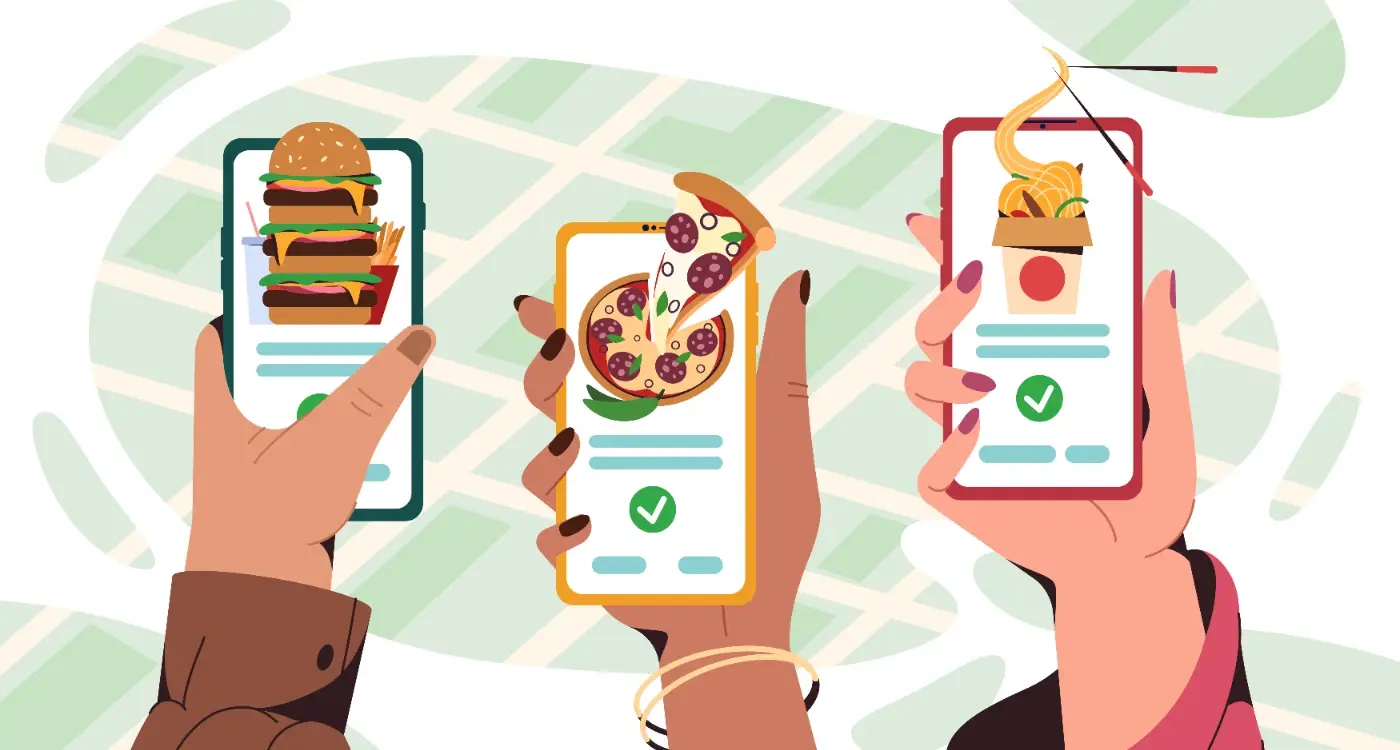How Can You Build Viral Features That Drive Organic Growth?
Did you know that TikTok's duet feature alone is responsible for millions of videos being created every single day? That's the power of viral app features—they turn your users into your marketing team without them even realising it. The best part? They do it because they genuinely want to, not because you've asked them to.
Building viral features isn't about luck or hoping something catches on. It's about understanding what makes people tick and designing features that tap into those natural human behaviours. Features that make users think "I have to show this to my friends" or "This is too good not to share."
The most successful viral features don't feel like marketing—they feel like magic
This guide will walk you through the exact process we use at Glance to build features that drive organic growth. We'll cover the psychology behind why people share, the mechanics that create viral loops, and the common pitfalls that can kill your app's viral potential before it even gets started. Whether you're building your first app or looking to add growth engineering to an existing product, you'll learn how to create features that users can't help but share with others.
Understanding What Makes Features Go Viral
I've watched countless apps rise and fall over my years in mobile development, and there's one thing that separates the breakout successes from the forgotten downloads—viral features that people can't stop talking about. But here's what most people get wrong: they think viral features happen by accident or pure luck. They don't.
The truth is, viral features share three fundamental characteristics that we can actually design for. First, they solve a real problem that people face regularly—not just once, but repeatedly. Think about why people keep using certain features; it's because these features make their lives genuinely easier or more enjoyable. Second, they're dead simple to use and understand—your grandmother should be able to figure it out without instructions. And third, they create what I call "natural bragging moments" where using the feature gives people something worth sharing with others.
The Sharing Sweet Spot
What makes someone want to share something? It comes down to how the feature makes them look or feel. People share things that make them appear clever, helpful, or part of something interesting. If your feature doesn't give users a reason to show it off to their mates, it won't spread naturally—and that's where most developers go wrong.
The Psychology Behind User Sharing Behaviour
Understanding why people share content is like having a secret weapon in your app development toolkit. After working with countless clients over the years, I've noticed that the most successful viral app features tap into basic human psychology—and it's not as complicated as you might think.
People share for surprisingly predictable reasons. They want to look good to their friends, help others, or express their identity. When someone posts their workout stats from a fitness app, they're not just sharing data—they're showing off their dedication and inspiring others. Smart developers build features that make users feel proud, helpful, or part of something bigger.
Core Motivations for Sharing
- Social validation: Users want to appear knowledgeable, successful, or entertaining
- Relationship building: Sharing helps people connect and strengthen bonds
- Self-expression: Content becomes a way to communicate personality and values
- Reciprocity: Users share because they've received value and want to give back
- Emotional release: Strong feelings—joy, surprise, outrage—drive immediate sharing
The timing matters too. People are most likely to share when they're experiencing peak emotions or have just achieved something meaningful within your app. This is why celebration screens and achievement notifications work so well for driving organic growth.
Design sharing prompts to appear right after users complete meaningful actions—like finishing a level, achieving a goal, or creating something they're proud of. This captures them at their emotional peak when they're most likely to share.
Building Features That Users Can't Help But Share
Right, let's get to the meat of it—creating features that practically beg users to share them. After building countless apps over the years, I've noticed something interesting: the most shareable features aren't always the flashiest ones. They're the ones that make users feel something.
The Effortless Share Moment
The best shareable features create what I call an "effortless share moment." This happens when a user achieves something in your app and their immediate reaction is "I need to show someone this!" Think about fitness apps that celebrate milestones or photo apps that create perfect collages automatically. The key is timing—you want to offer the share option right when that excitement peaks, not five screens later when they've forgotten about it.
Making Users Look Good
Here's what I've learnt: people share things that make them look smart, funny, or accomplished. Your feature needs to give users social currency. A language learning app that generates witty certificates, or a cooking app that creates beautiful recipe cards with the user's photo—these work because they help users showcase their achievements without looking like they're bragging.
The magic happens when sharing feels natural rather than forced. Nobody likes being pestered to share, but when you've created something genuinely worth sharing, users will do the marketing for you.
Growth Loops and Viral Mechanics
Right, let's talk about the engine that powers viral app features—growth loops. I've watched countless apps succeed and fail, and the ones that really take off have one thing in common: they create systems where users naturally bring in more users without being asked.
A growth loop is basically a cycle where your existing users create value that attracts new users, who then create more value, and so on. Think about how Instagram works—people post photos, their friends see them and want to join, then those new users post their own content. It's a self-feeding cycle that keeps growing.
The Three Types of Growth Loops
There are three main types I see working well in apps today. Viral loops rely on users sharing content or inviting friends directly. Content loops happen when users create something that others discover through search or browsing. And paid loops use the revenue from existing users to acquire new ones through advertising.
The best viral features don't feel like marketing—they feel like natural extensions of what users already want to do
Building Your Loop
The trick is making each step feel natural and valuable to the user. Don't force people to share—give them reasons they actually want to. Make the experience better when friends join, or create content that's genuinely worth sharing. The strongest loops solve real problems whilst spreading organically.
Measuring and Tracking Viral Performance
Right, so you've built what you think is a brilliant viral feature. Now what? Well, this is where most people get it wrong—they just sit back and hope for the best. But tracking viral performance isn't just about watching download numbers go up (though that's nice too!).
The Numbers That Actually Matter
Your viral coefficient is the big one here. That's how many new users each existing user brings in through sharing. If one user brings in two more users, your coefficient is 2.0. Anything above 1.0 means you're growing organically, which is what we're after.
But don't stop there. You need to track sharing rates—how many people actually hit that share button compared to how many see it. Then there's the conversion rate; how many people who see a shared piece of content actually download your app. These metrics tell you where your viral loop might be breaking down.
Tools and Tracking Methods
Most analytics platforms can track basic sharing, but you'll want something more sophisticated. Tools like Mixpanel or Amplitude let you create custom events for each step of your viral funnel. You can see exactly where users drop off and optimise accordingly.
The key is setting up proper attribution so you know which shares are actually working. Without this data, you're just guessing—and guessing doesn't build viral apps.
Common Mistakes That Kill Viral Potential
After building apps for countless clients over the years, I've watched brilliant concepts fail spectacularly because of avoidable mistakes. The worst part? Most of these viral app features could have been saved with a bit of foresight and some honest self-reflection.
The biggest killer of app virality is making sharing feel forced or unnatural. Users can smell desperation from miles away—when you shove sharing buttons everywhere or interrupt their experience with constant prompts to invite friends, you're doing more harm than good. I've seen apps bombard users with pop-ups asking them to rate, share, or invite before they've even used the core feature properly. That's a one-way ticket to the uninstall button.
The Technical Killers
Poor performance will murder your viral potential faster than anything else. If your app crashes during sharing or takes forever to load when someone clicks a shared link, you've lost them forever. Users won't give you a second chance, and they certainly won't recommend a broken app to their mates.
Always test your sharing features on different devices and network conditions—what works on your high-end phone might fail miserably on older devices with slower connections.
The Strategic Blunders
Here are the growth engineering mistakes that consistently kill viral momentum:
- Making users jump through hoops before they can share anything meaningful
- Focusing on vanity metrics instead of actual user engagement
- Ignoring the user experience in favour of aggressive growth tactics
- Not providing clear value before asking users to invite others
- Building viral mechanics that only benefit you, not your users
The truth is, sustainable app growth comes from creating something genuinely worth sharing first—then making it easy to do so.
Conclusion
Building viral features isn't about getting lucky—it's about understanding people and what makes them tick. Throughout this guide, we've looked at the mechanics behind sharing behaviour, the psychology that drives users to tell their friends, and the technical systems that turn individual shares into explosive growth loops.
The most successful viral features feel natural; they solve real problems whilst making sharing feel like the obvious next step. Whether it's Spotify's year-end summaries that people can't wait to post or referral programmes that benefit everyone involved, the best viral mechanics don't feel forced or artificial.
Here's what I want you to take away from all this: viral growth isn't a magic trick you can bolt onto any app. It needs to be baked into your product from the ground up. Start with understanding your users deeply—what motivates them, what problems they face, and how they naturally communicate. Then build features that make sharing beneficial, easy, and rewarding.
Most apps won't go viral overnight, and that's perfectly fine. Focus on creating genuine value first, then look for natural opportunities to encourage sharing. Track your metrics carefully, test different approaches, and be patient. The apps that achieve sustainable viral growth are usually the ones that took time to get the fundamentals right before chasing the big numbers.
Share this
Subscribe To Our Learning Centre
You May Also Like
These Related Guides

How Do I Make a Food Delivery App Stand Out?

How Do You Transform Your MVP into a Market-Leading App?



